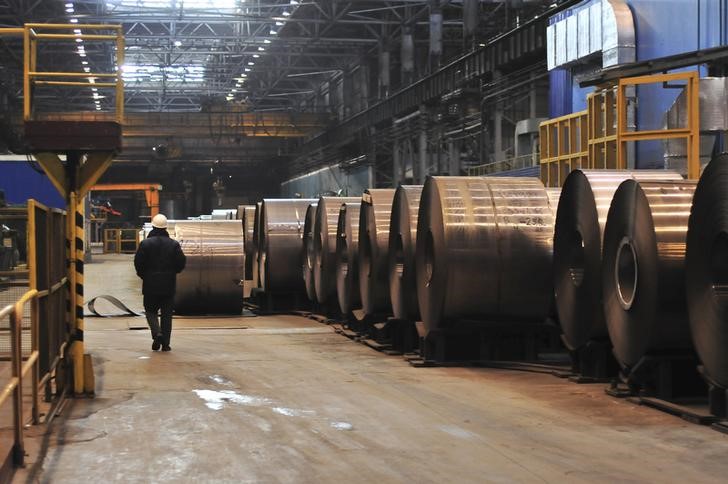(The opinions expressed here are those of the author, a columnist for Reuters.)
By Clyde Russell
LAUNCESTON, Australia, Sept 1 (Reuters) - China's imports of iron ore and coal remained robust in August, providing a fundamental justification for the ongoing resilience in the price of the two major bulk commodities.
Although there are several more factors driving prices than China demand, it's also worth noting that crude oil imports likely slipped back somewhat in August, coinciding with a retreat in the price of global benchmark Brent crude LCOc1 .
Imports of iron ore by China, buyer of about two-thirds of global seaborne supplies of the steel-making ingredient, were estimated at 89.26 million tonnes in August by Thomson Reuters Supply Chain and Commodities Research, based on vessel-tracking and port data.
While the shipping data doesn't exactly dovetail with official data because of slight differences in when cargoes are assessed as having arrived for customs purposes, it was within 2.5 percent of the customs numbers over the first seven months of the year.
Official data for August commodity imports will be released in about 10 days time.
If the official numbers mirror the vessel-tracking data, it would mean August's iron ore imports would be the second-highest on record, and the most in any month this year.
Such strength in imports is being reflected in spot Asian iron ore prices .IO62-CNI=SI which rose slightly in August from July to finish the month at $59 a tonne, taking the year-to-date gain to almost 40 percent.
Whether this can continue is largely dependent on whether China will actually start cutting steel output, which reached a record on a daily basis in June, before easing slightly in July.
Coal is also performing strongly on the back of rising Chinese import demand, which similar to iron ore has taken the market by surprise.
China's August seaborne coal imports are estimated at 18.12 million tonnes, down somewhat from July's 18.9 million, but still the second-highest monthly total this year, according to ship-tracking data.
The Thomson Reuters vessel-tracking data doesn't exactly match Chinese customs data, as the official figures include overland imports by rail and truck, mainly from Mongolia.
However, the vessel data implies that China's total coal imports in August will be fairly close to July's official number of 21.21 million tonnes.
Earlier in August it seemed from vessel-tracking data that China's seaborne coal imports would slump in August, but a flurry of late cargoes from Indonesia boosted the total, implying increased demand for the low-rank coal typically supplied by the Southeast Asian nation.
China's year-to-date coal imports were up 6.7 percent in July, again providing fundamental support for the 32 percent rally this year in the benchmark thermal coal weekly index GCLNWCWIDX at Australia's Newcastle Port.
While both thermal coal and iron ore remain well-supplied markets, the strength in Chinese demand has boosted prices for both, a situation likely to persist as long as China's imports remain robust.
CRUDE PULLBACK TEMPORARY?
Among major resource imports, it appears China's appetite for crude oil eased in August, with Thomson Reuters Supply Chain and Commodities Research estimating 28.79 million tonnes of oil being imported in August.
This equates to about 6.78 million barrels per day (bpd), which would be substantially down on the 7.32 million bpd officially reported in July.
The most likely explanation for the lower crude imports is seasonal refinery maintenance in China, but it's also true that apparent demand has been weak, falling 0.3 percent to 10.58 million bpd in July from the same month in 2015. growth in the parts of the Chinese economy that are heavy users of diesel, such as manufacturing and construction, have served to trim the use of the main fuel used for transport and in industry.
While oil markets have been more focused on yet another round of "will they, won't they" being played over the possibility of a producer freeze on output, the slowing of purchases by the world's second-biggest crude importer has largely flown beneath the radar.
It might be that China is experiencing a temporary easing in crude oil imports, but any sign of slowing growth and the possibility of a weak second half may act as a drag on oil prices.
Overall, it appears that China's imports of major commodities are still relevant to prices, notwithstanding the slowing growth in the world's second-largest economy.
(Editing by Richard Pullin)
